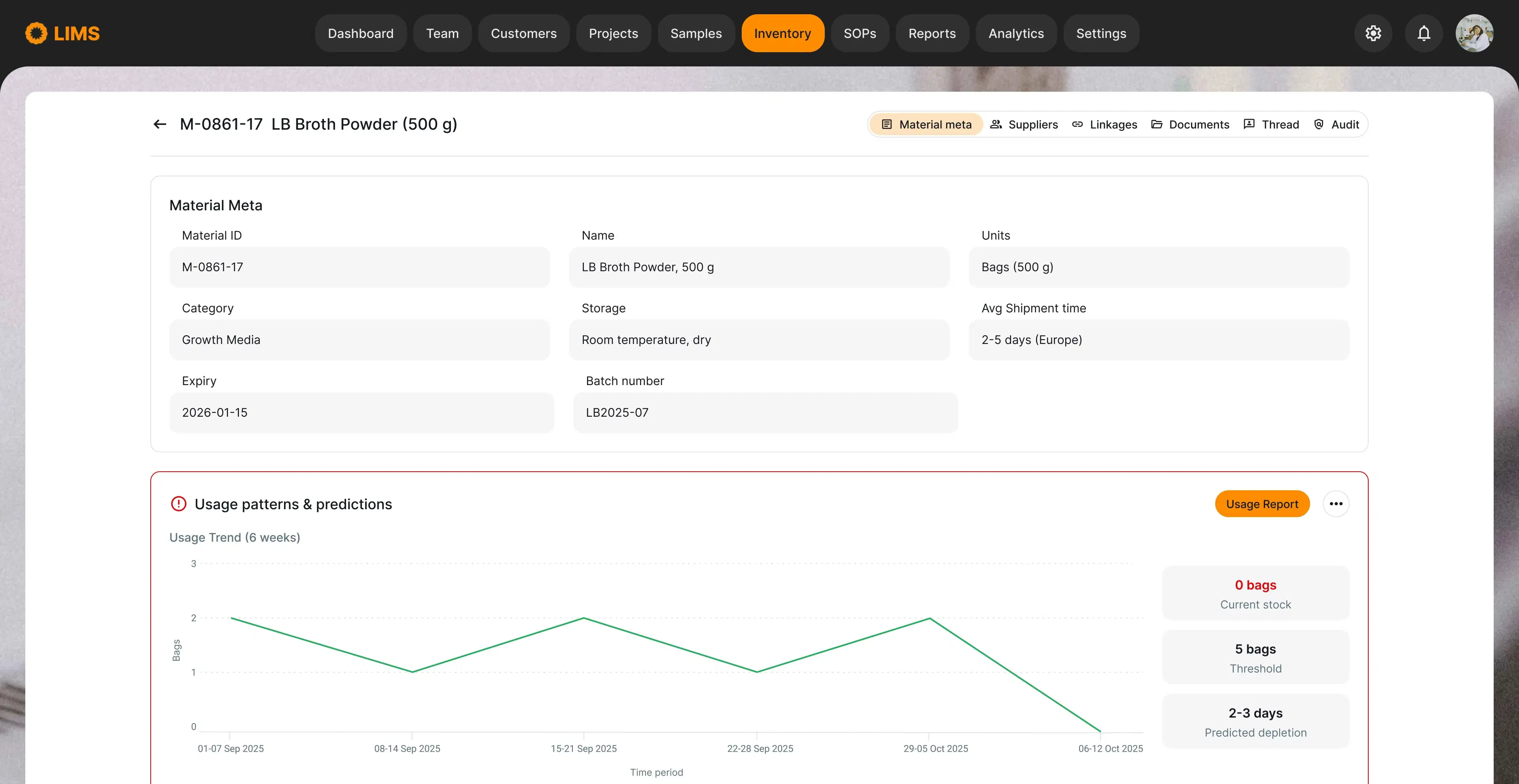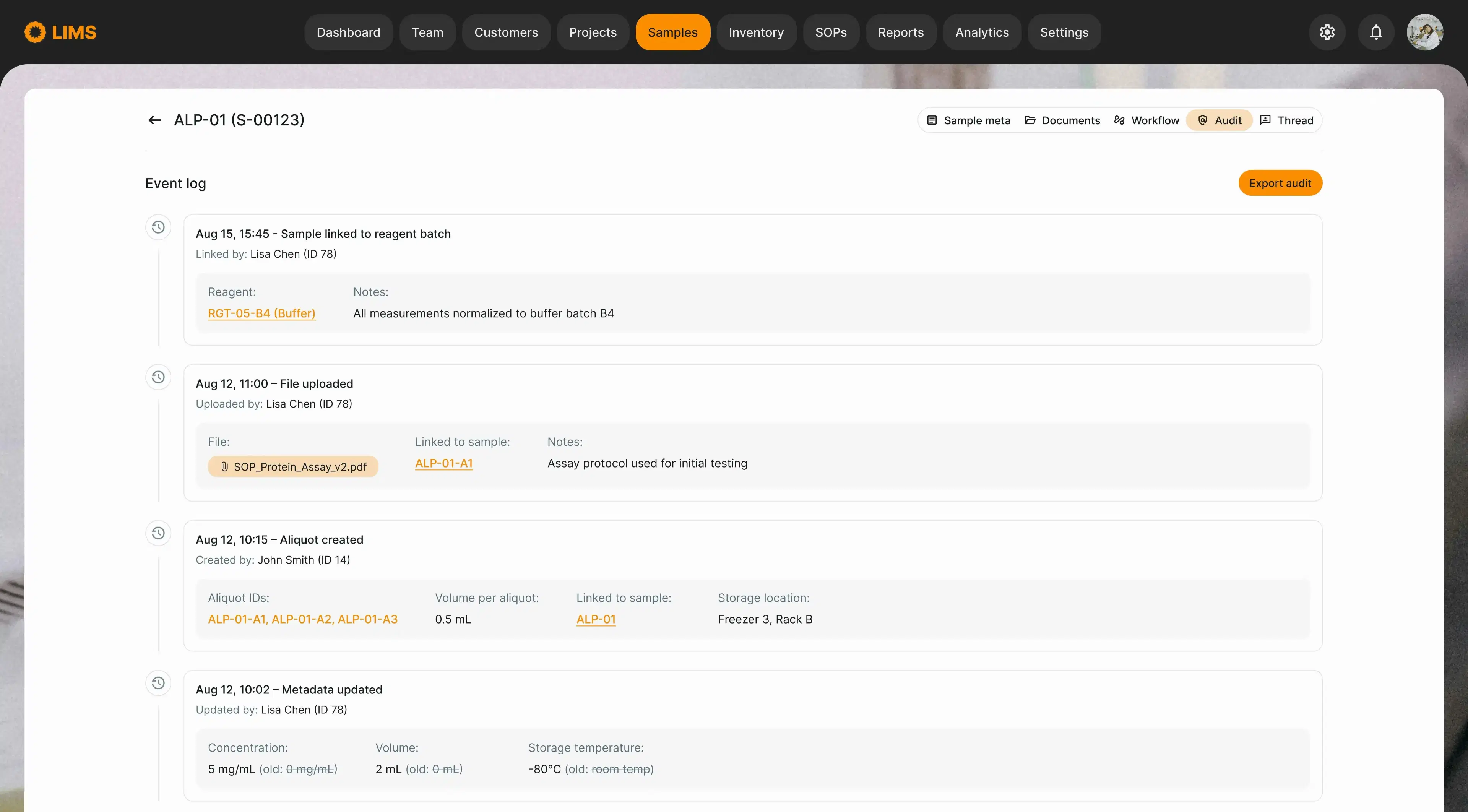The promise of integrating everything in the lab sounds irresistible: seamless data flow, less manual work, and better visibility. But as biotech teams build out digital infrastructure, not every connection between tools delivers on that promise.
In our experience working with biotech startups and scaling CROs, we've seen which integrations actually reduce friction, and which ones add complexity without real return.
Integrations that pay off (almost immediately)
- LIMS ↔ ELN
Sample data automatically fills into experiment logs, reducing transcription errors and improving traceability - a must for growing R&D teams - ELN ↔ Inventory
Usage of reagents in an experiment triggers real-time stock updates. Some platforms like Benchling and Labguru support this out-of-the-box, cutting down on email follow-ups. - LIMS ↔ QC
Tools Instead of manually entering QC results, integrations can pull raw data directly from instruments or middleware (e.g., Dotmatics). This saves hours in regulated environments. - CRM ↔ LIMS (for CROs)
When client requests sync directly with study records, CROs reduce onboarding time and centralize project management. This is especially useful in multi-client, multi-study setups. - ERP ↔ Inventory
Connecting lab inventory with tools like NetSuite allows finance and procurement teams to monitor spending and automate reorder processes.
Integrations that sound great, but often don't deliver list
- Instrument ↔ Everything
It sounds futuristic to pipe raw data from every instrument into your LIMS or ELN. But without unified data formats or strong middleware, these setups often break, require constant patching or create more confusion than clarity. - Custom Dashboards Every Data Source
The dream of one dashboard to rule them all is hard to pull off. Data often lives in different formats or cycles. Unless your team has mature BI practices, it's better to keep dashboards focused on one use case at a time. - HR ↔ Lab Scheduling
Linking people, time, and resources sounds great in theory - but unless there's a strong culture of updating availability, these tools become more aspirational than actionable. - E-signatures ↔ Every Approval Workflow
Trying to digitize all lab approvals with DocuSign/Adobe can backfire. Focus on high-value touchpoints (e.g. GMP submissions) instead of blanket digitization.
How to prioritize integrations that actually work
Start with pain, not hype. Which parts of your workflow still depend on manual transcription, copying data, or chasing someone for updates? That's where integration can unlock real efficiency. Most early-stage biotechs find success by connecting 2-3 core tools - not everything.
We typically recommend starting with a LIMS-ELN-Inventory trio. It's fast to validate, easy to expand, and directly impacts lab productivity.
Final thought:
Integrations aren't a goal. They're a method which, if done right, they reduce busywork and improve traceability. Done wrong, they create silos in code instead of spreadsheets.
Focus on simple, modular connections, and scale when the ROl is obvious.














